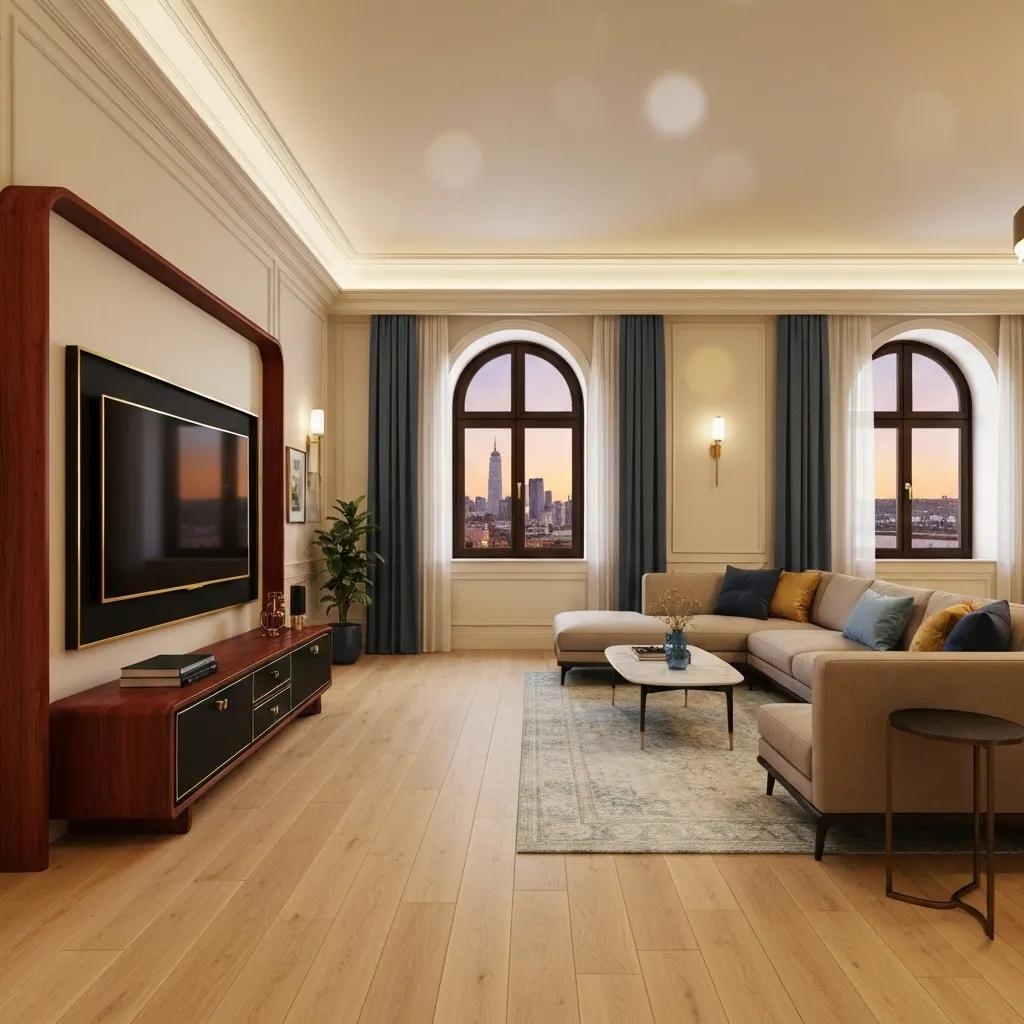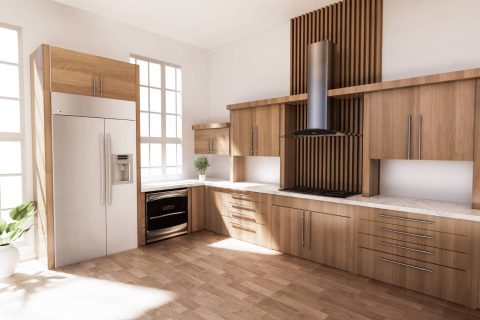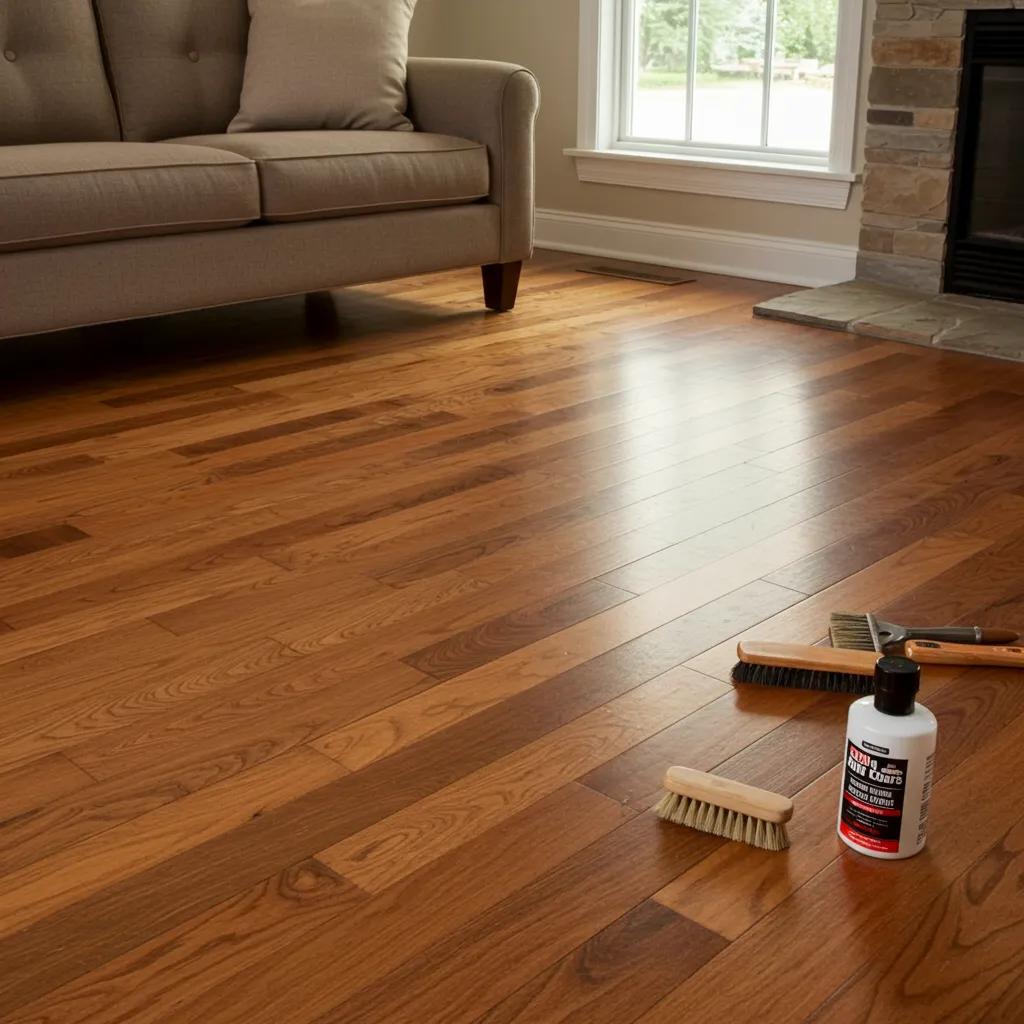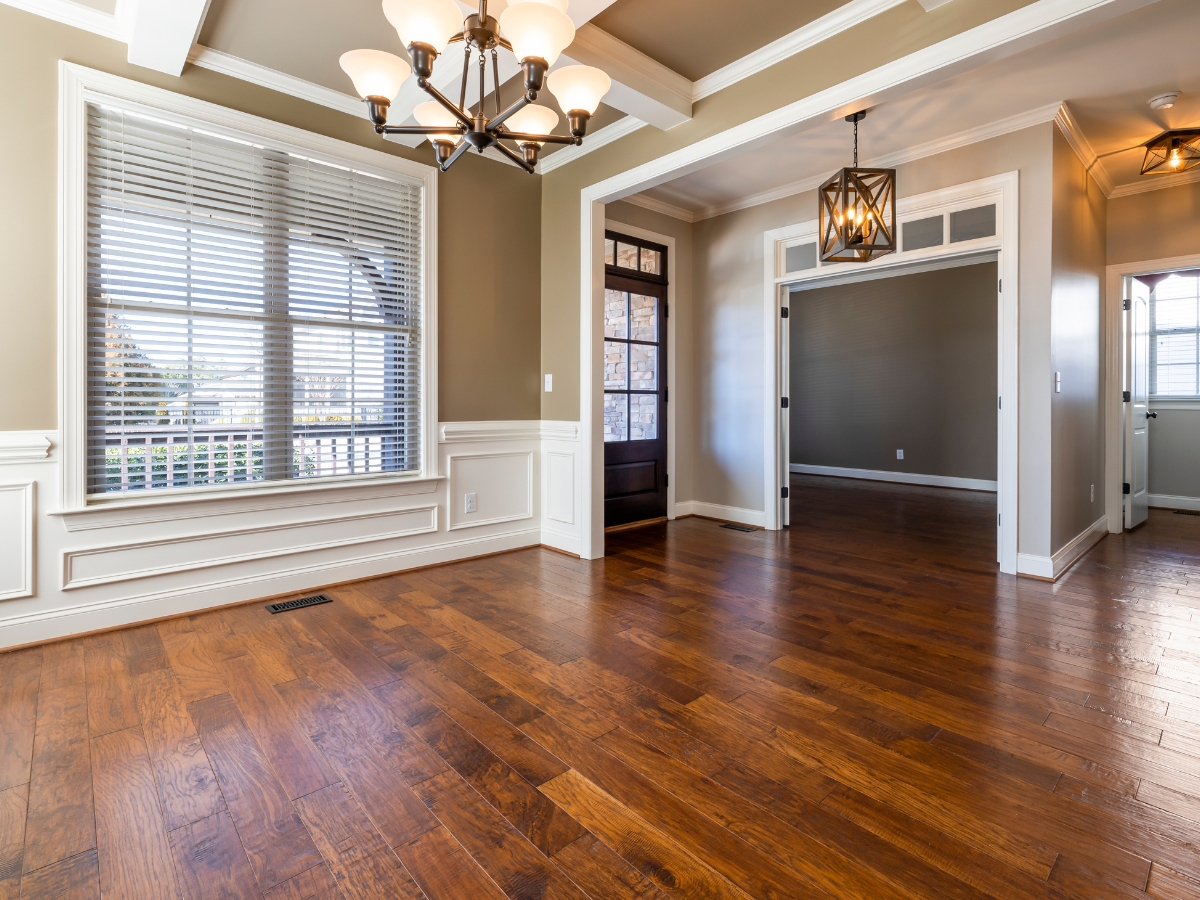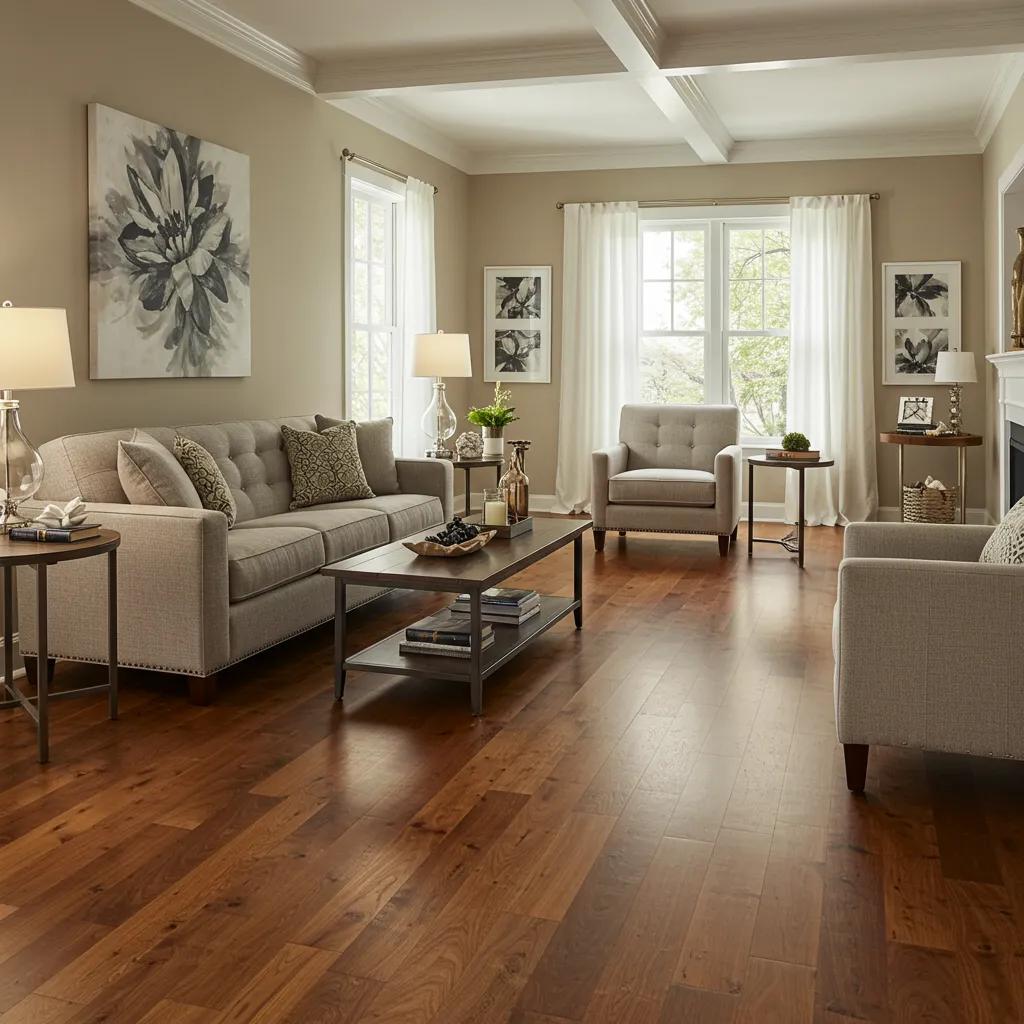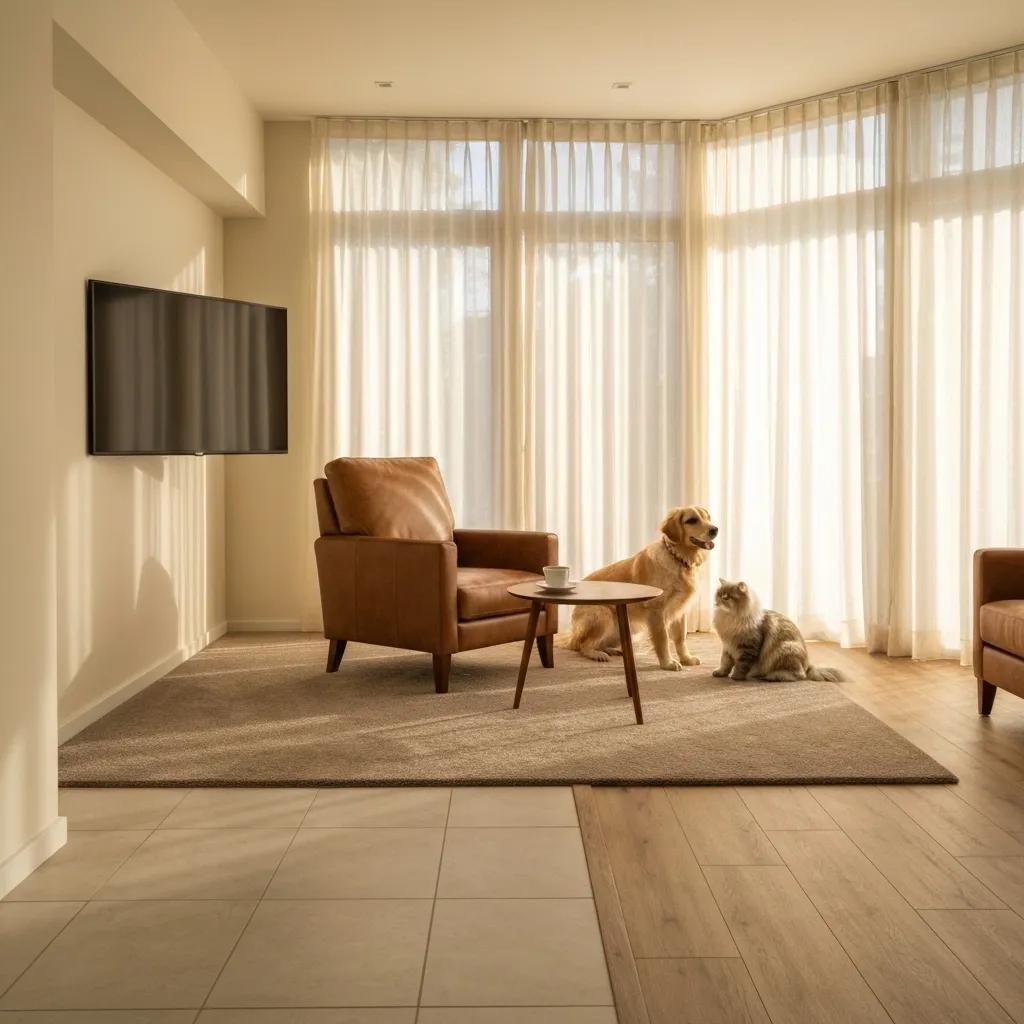Wide plank hardwood flooring offers a timeless, elegant aesthetic that can elevate the style of any Dunwoody home—but its suitability depends on more than just looks. While these expansive boards showcase natural wood grain beautifully and can make rooms feel more open and luxurious, they also come with unique considerations for Georgia’s humid climate, including potential expansion, contraction, and higher installation costs. In this guide, we’ll break down the key pros and cons of wide plank hardwood specifically for Dunwoody homeowners, from its visual impact and long-term value to its maintenance needs and performance in local seasonal conditions, helping you decide whether this striking option is the right fit for your home.
Wide Plank Hardwood Flooring: Timeless Style Meets Modern Living
What Are the Benefits of Wide Plank Hardwood Flooring?
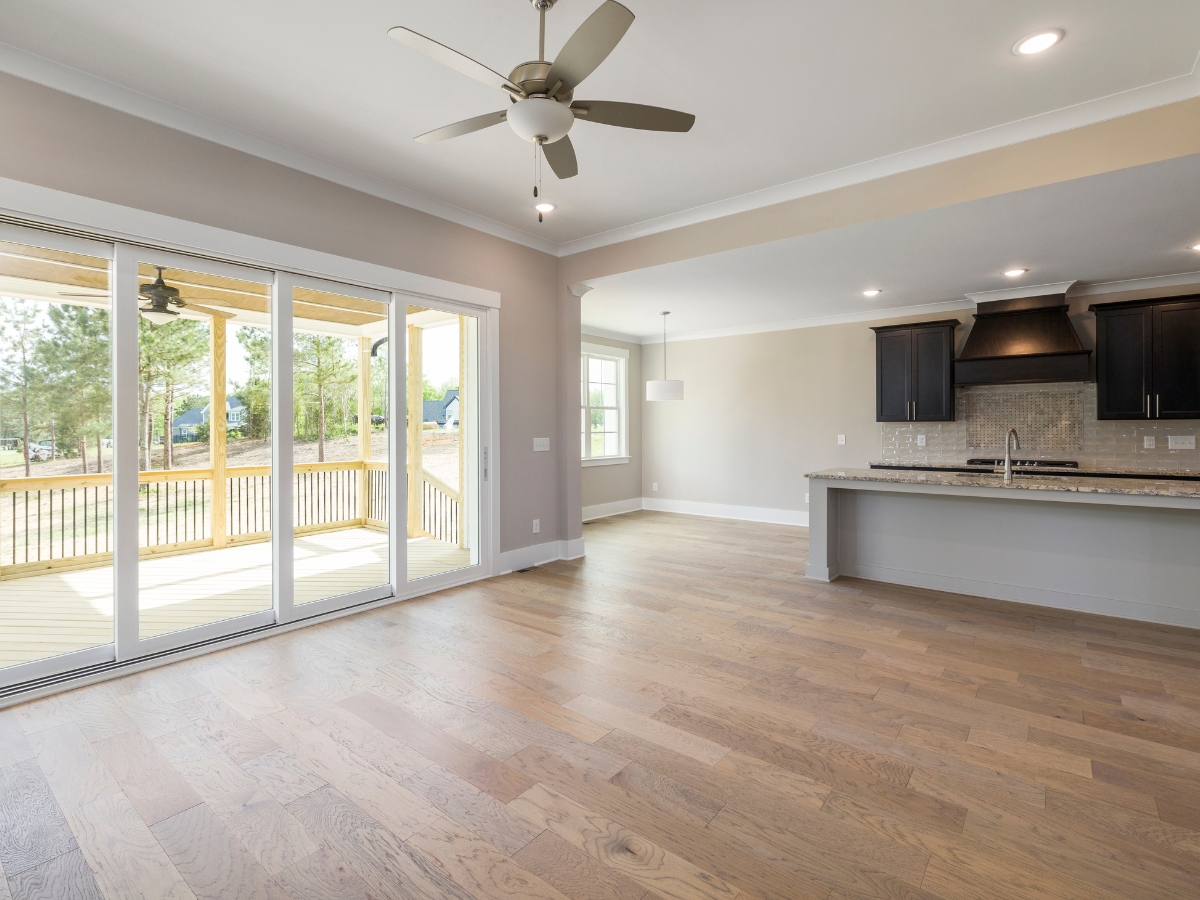
Wide plank hardwood uses boards that are typically 5 inches or wider. The larger format reduces the number of seams you see, which helps a room read as cleaner and more spacious. Because each board shows more of the tree’s natural character, you get visible grain, knots, and tone shifts that give real wood its appeal. In Dunwoody homes, wide planks suit open plans and bring a calm, continuous look to living rooms, kitchens, and primary suites.
How Wide Plank Hardwood Elevates The Look Of Dunwoody Homes
With fewer joints breaking up the surface, wide boards create strong visual lines that make spaces feel larger. The extra board width also highlights grain patterns that can get lost with narrow strips. White oak, for example, shows off its medullary rays and subtle color variation, while hickory delivers dramatic contrast. Whether your style leans Craftsman, modern farmhouse, or transitional, the broad format ties together cabinetry, wall color, and trim for a cohesive finish.
What To Know About Durability And Maintenance
Many wide planks are milled from stable cuts and thicker wear layers, which helps control cupping and prolongs the floor’s life. Proper installation matters just as much as the wood itself. Subfloors should be flat and dry, and boards need time to acclimate before fastening. Once installed, routine care is simple: place mats at entries, use felt pads under furniture, sweep or vacuum regularly, and clean with a hardwood-safe solution. When wear shows in high-traffic lanes, most wide plank hardwood can be refinished to refresh color and sheen.
Does Wide Plank Hardwood Increase Resale Value In Dunwoody?
Buyers associate wide planks with premium materials and thoughtful design. That perception often translates into stronger offers because the flooring reads as a lasting upgrade instead of a short-term finish. In competitive metro Atlanta neighborhoods, continuous wide plank hardwood from the foyer through main living areas signals quality and helps listings stand out in photos and showings.
Key Benefits At A Glance
| Feature | How It Works | What It Means For You |
|---|---|---|
| Fewer seams | Wider boards reduce joints across the room | A cleaner, more expansive look |
| Thicker wear layer | More sandable surface and stable construction | Longer life and refinish options |
| Highlighted grain | Larger board face shows natural character | Visual depth that suits many styles |
Potential Considerations Before You Install
Moisture swings can cause movement in any wood floor, and wider boards make that movement easier to see. Keep indoor humidity within a steady range to limit gaps and cupping. Because wide planks span more surface per board, subfloor prep must be precise to avoid telegraphing dips or ridges. Material and installation costs can be higher than narrow strip options, so plan your budget accordingly. Finally, choose a finish that matches your lifestyle. A matte sheen hides small scratches, while a high-gloss finish reflects more light and can reveal scuffs sooner.
Bottom Line For Dunwoody Homes
If you want a floor that makes rooms feel larger, adds natural texture, and holds up with proper care, wide plank hardwood is a strong choice. With solid prep, mindful humidity control, and a finish suited to daily life, these floors deliver lasting style and value across a range of Dunwoody interiors.
What Are The Common Downsides Of Wide Plank Hardwood Flooring In Dunwoody, GA?
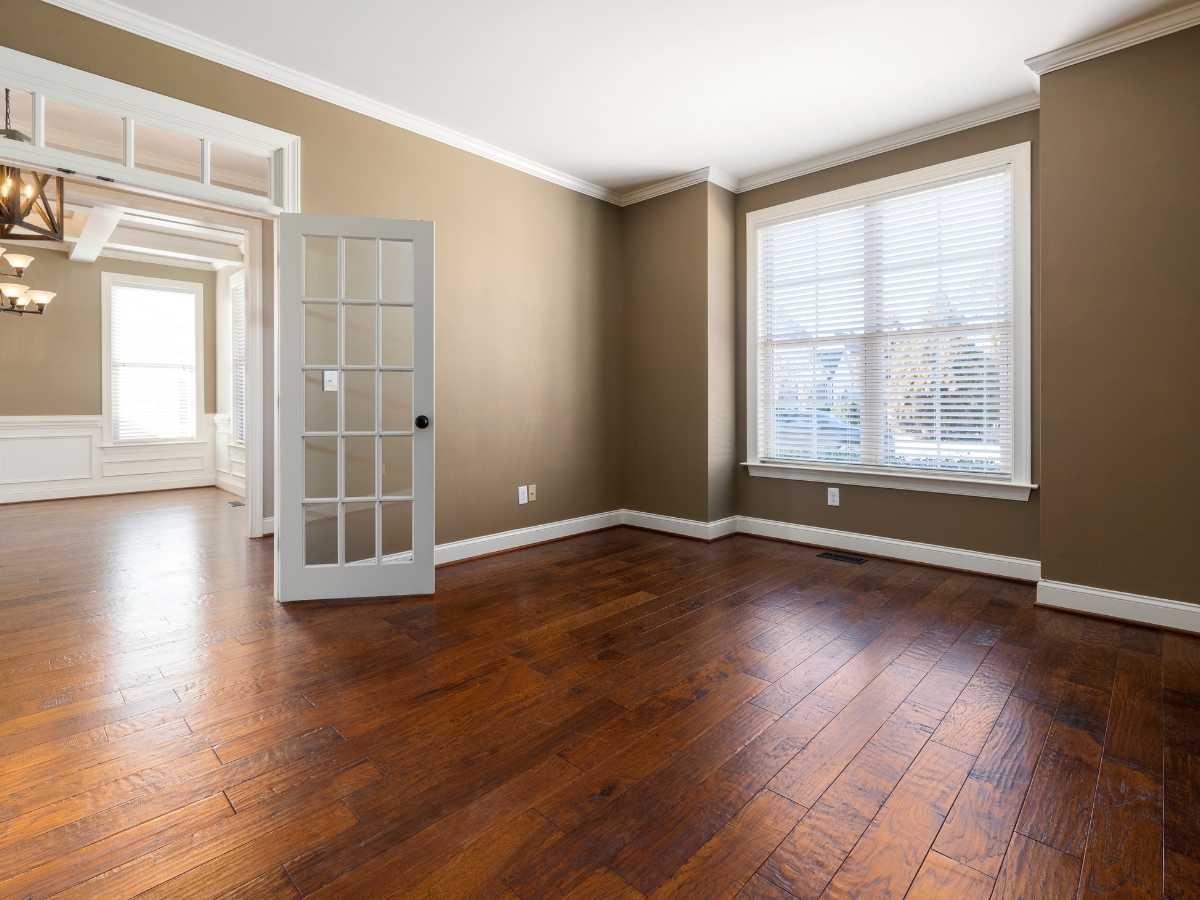
Wide plank hardwood delivers a striking look, but it also brings a few tradeoffs that are worth weighing before you buy. The boards show more of the wood’s natural character, which is part of the appeal, yet that larger surface can also reveal movement, scratches, and finish wear more readily. Understanding the maintenance, climate, and cost considerations helps you plan ahead and avoid surprises.
What Maintenance Challenges Should Dunwoody Homeowners Be Prepared For?
Keeping wide boards looking sharp takes consistent, light-touch care. Grit and fine dust are more obvious on a broad surface, so frequent sweeping or vacuuming is important to prevent micro-scratches. Use minimal moisture when you clean to avoid swelling at the edges, and stick to cleaners labeled for hardwood. Because the boards span more surface area, small gaps or slight cupping are easier to spot, especially across long sightlines. When it is time to refinish, crews often sand larger continuous sections to keep the sheen and color even, which can mean longer set-aside time for the space compared to narrow strip floors.
How Do Dunwoody’s Climate And Humidity Affect Wide Plank Hardwood?
Dunwoody’s warm, humid summers and cooler winters create indoor humidity swings. Wood expands as humidity rises and contracts as it falls, and wider boards make that movement more visible. If indoor humidity is not kept within a steady range, usually 30 to 50 percent, you are more likely to see seasonal gapping or edge lift. Good preparation reduces the risk. Allow proper acclimation before installation, verify the subfloor is flat and dry, and consider an engineered wide plank construction that uses a stable core. Ongoing control matters too. Run a dehumidifier in summer, add gentle humidification in winter if needed, and keep airflow consistent to help the floor settle evenly.
Are There Installation Factors That Can Create Issues Later?
Wide plank hardwood is less forgiving of uneven subfloors. Minor dips or high spots that might go unnoticed under narrow strips can telegraph through wider boards. Installers may need to level or plane areas so the boards sit flat, and they will often use a combination of adhesive and mechanical fastening for better hold. Skipping these steps can lead to squeaks, hollow sounds, or visible ridges over time. If you are planning radiant heat, confirm the species, thickness, and construction are compatible, and follow heat-up and cool-down schedules to limit stress on the wood.
Are There Specific Cost Considerations For Wide Plank Flooring In Dunwoody?
Material prices for wide plank hardwood tend to run higher because the milling yield is lower and the boards demand stricter grading. Installation can also cost more due to longer acclimation, extra subfloor prep, and the need for precise layout across open plans. It is smart to set a contingency of about 10 to 20 percent to cover leveling compounds, additional adhesive, or trim adjustments. If you love the look but want to manage budget and movement, engineered wide plank options often provide a balanced mix of stability and value while keeping the same visual scale.
Bottom Line For Homeowners
Wide plank hardwood can be a beautiful upgrade, yet it asks for careful planning. Control humidity, prepare the subfloor, choose a construction that suits the home, and budget for a slightly higher installation effort. With those pieces in place, you can enjoy the scale and character you want while keeping maintenance and movement in check.20% on top of standard hardwood costs to cover material selection, subfloor preparation, and expert installation.
How Does Wide Plank Hardwood Flooring Compare to Other Flooring Options in Dunwoody GA?
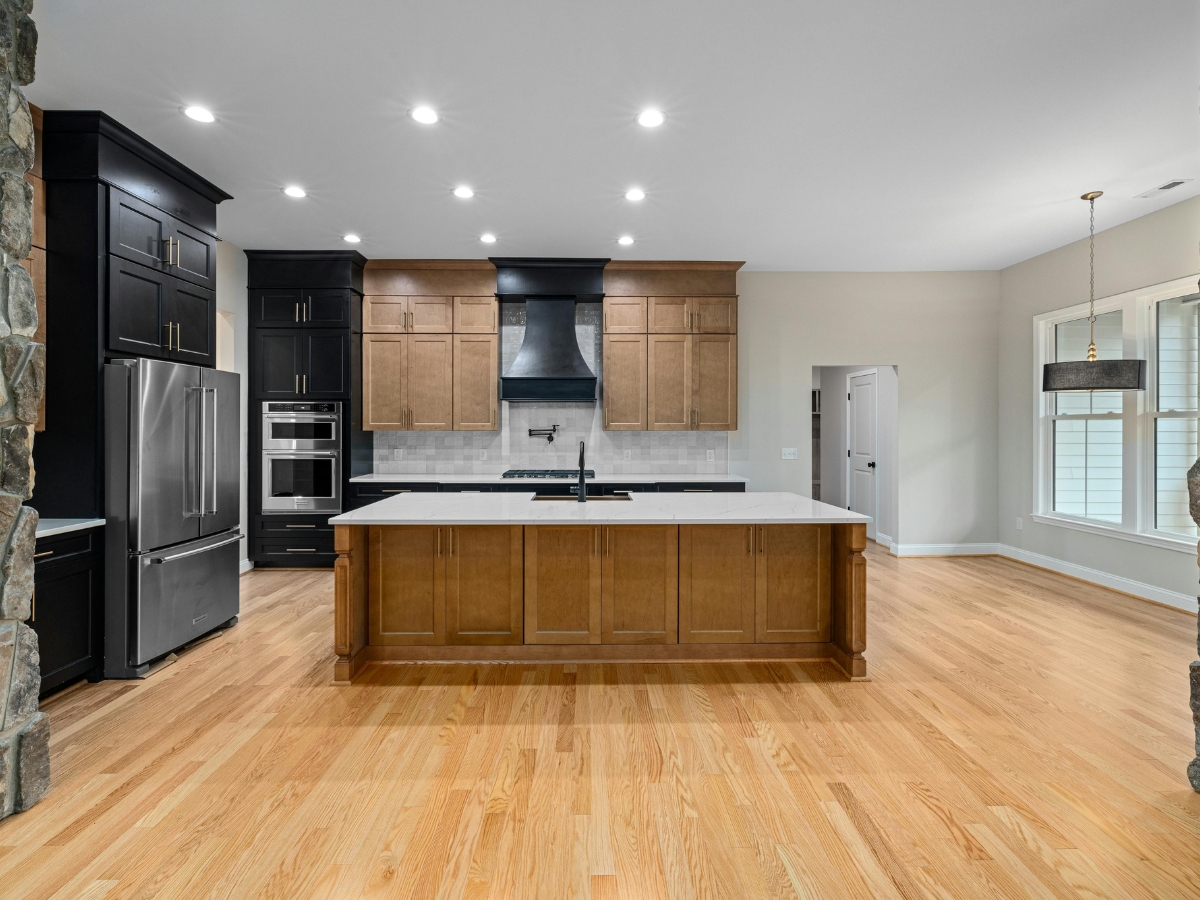
Wide plank hardwood stands out for its premium look and long-term durability, but it competes with traditional hardwood, engineered wood, and laminate on factors like price, moisture resistance, and installation complexity. Comparing these key features helps homeowners match their choices with their priorities.
| Flooring Type | Board Width | Stability | Installation Cost |
|---|---|---|---|
| Wide Plank Hardwood | 5–8 inches | High natural stability with proper acclimation | Premium |
| Traditional Hardwood | 2–3 inches | Moderate, less expansion per board | Standard |
| Engineered Wood | 3–7 inches | Excellent moisture resistance | Moderate |
| Laminate | Varies | Low susceptibility when sealed | Budget-friendly |
This comparison highlights how wide plank flooring offers significant design impact and longevity, while other materials provide benefits in moisture management or upfront budget savings.
What Are the Differences Between Wide Plank and Traditional Hardwood Flooring?
Wide planks create a more seamless, open look by minimizing visible seams and interruptions in the grain. Traditional hardwood uses narrower strips that allow for more frequent expansion gaps, making them easier to manage moisture-wise but resulting in a busier visual pattern. Wide planks require more stringent acclimation procedures and specialized installation skills.
How Does Wide Plank Flooring Measure Up Against Engineered Wood and Laminate?
Engineered wood has a plywood core that stabilizes the boards through humidity changes, while laminate uses a composite base topped with a printed wood design. These alternatives are generally less expensive and more resistant to moisture, but they don’t offer the authentic depth and refinishing capabilities of solid wide plank hardwood.
What Installation And Design Tips Should Dunwoody Homeowners Consider For Wide Plank Flooring?
Getting the most from wide plank hardwood starts long before the first board is laid. Performance and appearance depend on careful moisture control, a flat subfloor, and a layout that suits the room. When those details are dialed in, the floor wears better, stays quieter underfoot, and looks seamless across open spaces.
How Do Installation Methods Impact Wide Plank Hardwood Performance?
Acclimation is the first non-negotiable. Keep the flooring in the installation space for 7 to 14 days so the boards equalize to the home’s temperature and humidity. Skipping this step is a common cause of gaps or cupping later.
Subfloor prep comes next. Wide boards are less forgiving of unevenness, so the surface should be flat within about 3/16 inch over 10 feet. Address high spots and fill low areas so each plank sits solidly and does not telegraph ridges.
Choose a fastening method that matches the structure. Nail-down works well over wood subfloors and helps control movement across the width of each plank. Glue-down is typically the better choice over concrete slabs, paired with a moisture-appropriate adhesive and a vapor retarder that manages, not traps, vapor. If the home has radiant heat, confirm the species, thickness, and construction are approved for that system and bring temperatures up gradually after install.
Plan for movement. Wood expands and contracts through the seasons, and wider boards make that change more noticeable. Leave a perimeter expansion gap of roughly three-quarters of an inch at walls, columns, and built-ins, then cover it with base and shoe molding. Maintain indoor humidity between 30 and 50 percent to reduce seasonal gapping.
Finish choices matter for durability. Site-finished floors allow tight seams and custom stain, while high-quality factory finishes offer tough wear layers that resist abrasion. In either case, protect the surface with felt pads under furniture, lift rather than drag heavy items, and clean with a hardwood-safe cleaner that uses minimal moisture.
What Design Styles Work Well With Wide Plank Flooring In Dunwoody Homes?
Wide plank hardwood is a natural fit for open plans common in Dunwoody, because fewer seams make rooms feel larger and calmer. Modern farmhouse pairs beautifully with character-grade white oak or hickory in a natural or matte finish. Contemporary spaces benefit from long, uniform planks in cooler stains that keep lines clean and draw the eye across the room. Transitional interiors strike a balance with mid-tone stains that complement both classic millwork and streamlined furnishings.
Scale and proportion are your friends. Wider boards visually suit higher ceilings and larger rooms. In compact spaces, choose a width that feels generous without overwhelming the footprint, and lay the planks along the longest sightline to elongate the room.
Color and light deserve attention. Natural finishes show grain and brighten spaces, while deeper tones add contrast to light walls. Because sunlight can fade any wood floor over time, rotate rugs and consider UV-filtering shades on south-facing windows to keep color consistent.
Soft goods should frame, not hide, the floor. Low-pile area rugs with breathable pads define seating zones without trapping grit. Keep door mats at entries to catch sand and small stones that scratch finishes.
Thoughtful installation and design choices let wide plank hardwood deliver what homeowners want most: a stable, quiet floor with standout grain and a timeless look that works across styles, seasons, and daily life.
Where Can Dunwoody GA Homeowners Find Quality Wide Plank Hardwood Flooring And Services?
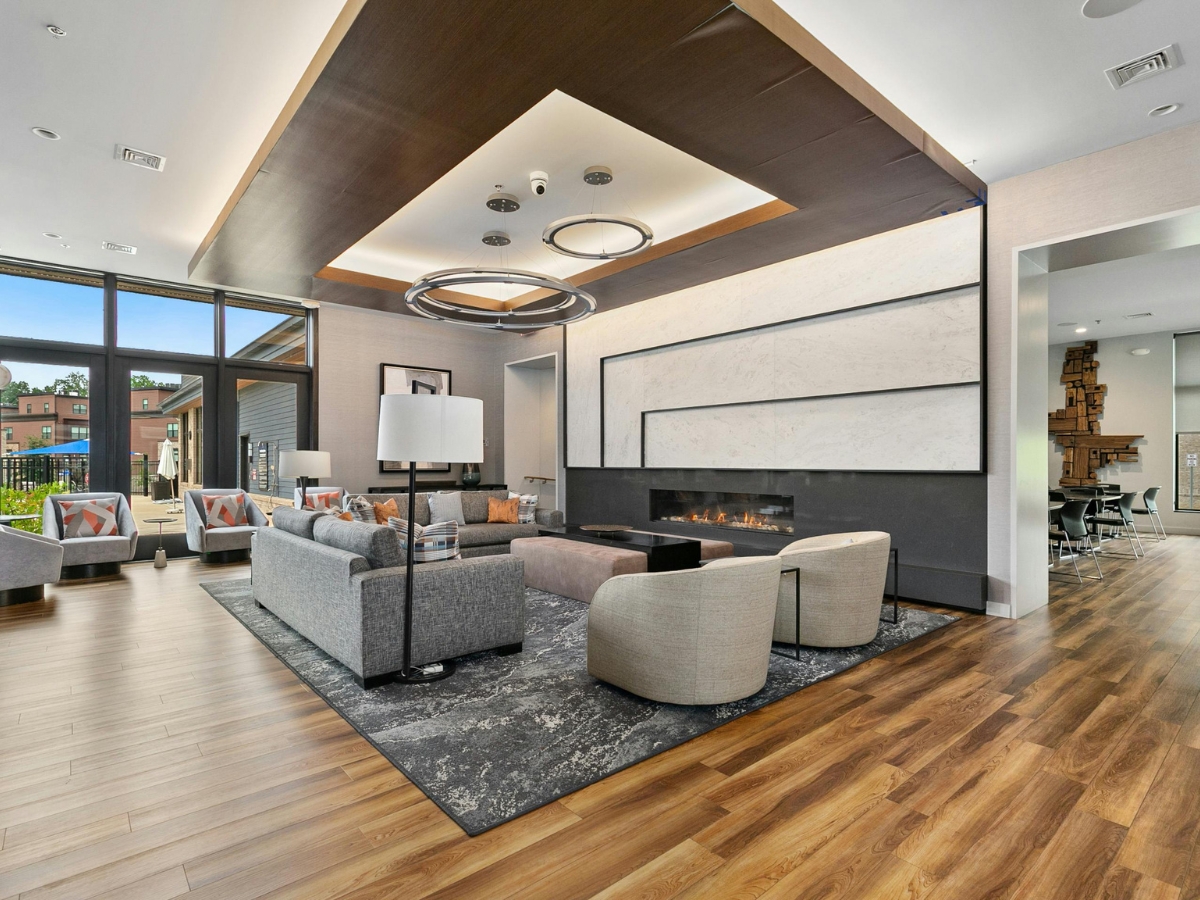
Local knowledge makes a real difference with wide plank hardwood. Showrooms and installers who work in Dunwoody every week understand slab moisture, seasonal humidity, and subfloor quirks found in nearby neighborhoods. Start with established flooring retailers and design centers in the metro area that stock multiple species and widths. Seeing full room displays and large samples in person helps you judge grain, finish sheen, and board stability before you commit.
Which Local Suppliers And Installers Are A Good Fit?
Look for suppliers that carry kiln-dried stock with documented moisture readings and clear grading standards. A strong partner will explain the pros and cons of white oak versus hickory, help you compare engineered and solid construction, and provide matching trims and stair parts. For installation, choose a crew that regularly handles boards 5 inches and wider. These teams know how to stage the material, monitor jobsite conditions, and select the right adhesives and fasteners for Dunwoody foundations, including crawlspaces and slabs.
What Should Homeowners Look For When Choosing Wide Plank Flooring Professionals?
Credentials and process matter more than a low bid. Ask to see recent projects with wide boards so you can evaluate seam tightness, color consistency, and how transitions were handled. A dependable proposal will spell out acclimation time, target indoor humidity, subfloor flatness tolerances, and the exact fastening method. It should also list the finish system, cure windows, and maintenance expectations. Favor contractors who measure moisture at delivery, mid-acclimation, and right before install, and who record those numbers in writing. Solid communication, predictable timelines, and a clear warranty give you confidence from the first site visit through the final walk-through.
How Can You Prepare Your Home For A Smooth Installation?
A successful install starts with stable indoor conditions. Run HVAC to hold relative humidity near the middle of the recommended 30 to 50 percent range for at least a week prior to delivery. Make sure the subfloor is clean, dry, and flat; minor leveling now prevents telegraphed ridges later. Plan furniture moves and room access so installers can keep a steady workflow and maintain the layout’s sightlines. If the home has radiant heat, confirm the species and thickness are approved, and bring the system up to temperature gradually after the floor is in place.
Why Choose Wide Plank Hardwood And How Do You Protect The Investment?
Wide plank hardwood creates a calmer visual field with fewer seams and a stronger sense of flow between rooms. In open plans common to Dunwoody homes, that scale helps spaces feel larger and more cohesive. Protect the finish by placing mats at entries, using felt pads under furniture, and cleaning with a hardwood-safe cleaner that uses minimal water. Rotate rugs a few times a year and consider UV-filtering shades on sunny exposures to keep color even.
Partnering with experienced local pros and following a clear, documented process ensures your wide plank hardwood looks exceptional on day one and stays stable through Georgia’s seasons. The result is a timeless floor that elevates everyday living and supports long-term value.
Conclusion
Wide plank hardwood flooring offers a timeless blend of rustic charm and modern elegance, but choosing the right style, species, and installation method is key to maximizing its beauty and durability in your Dunwoody home. At Diaz Hardwood Floors, we guide you through every decision—from assessing subfloor requirements to selecting finishes that withstand Georgia’s humidity—ensuring your investment enhances your space for decades. Ready to explore your options? Call 404-791-0444 today for a consultation or send us a message through our site form. Let our experts help you achieve the perfect balance of aesthetics and practicality for your home.

